Today Current Affairs: 30th September 2021 for UPSC IAS exams, State PSC exams, SSC CGL, State SSC, RRB, Railways, Banking Exam & IBPS, etc
Table of Contents
INSPIRESAT-1 Cubesat Satellite:

INSPIRESat-1 CubeSat, developed under the International Satellite Program in Research and Education (INSPIRE), is ready for launch.
- It is a small scientific satellite which will be placed in a low earth orbit, equipped with a Compact Ionosphere Probe for studying the earth’s ionosphere.
- The ionosphere is the part of the atmosphere that is ionized by solar radiation.
- CIP is an all-in-one plasma sensor that uses a single instrument to perform multiple sensor functions in a time-sharing mechanism.
- It will also provide a greater understanding of why the Sun’s corona is orders of magnitude hotter than the photosphere, why there is an abundance of elements change during different solar events, and how these events affect the earth’s ionosphere.
- An order of magnitude is an exponential change of plus-or-minus 1 in the value of a quantity or unit.
- It weighs less than 10kg and will be launched aboard an upcoming Polar Satellite Launch Vehicle (PSLV) of the Indian Space Research Organisation (ISRO).
- PSLV is the third generation launch vehicle of India. It is the first Indian launch vehicle to be equipped with liquid stages.
- It is a four-staged launch vehicle with first and third stages using solid rocket motors and second and fourth stages using liquid rocket engines.
- Developed By:
- Laboratory for Atmospheric and Space Physics (LASP) at the University of Colorado Boulder in the U.S.
- National Central University, Taiwan
- Nanyang Technological University in Singapore
- Indian Institute of Space Science and Technology (IIST)
Global Roadmap To Defeat Meningitis: WHO
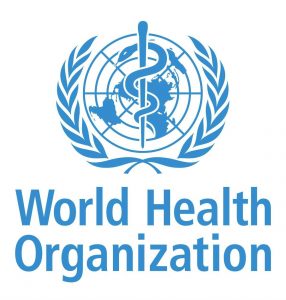
The World Health Organization (WHO) has launched the first-ever global strategy to defeat meningitis – ‘Global Roadmap to Defeat Meningitis by 2030’.
- Goals: The roadmap includes three visionary goals:
- Eliminate epidemics of bacterial meningitis.
- Reduce cases of vaccine-preventable bacterial meningitis by 50% and deaths by 70%.
- Reduce disability and improve quality of life after meningitis of any cause.
- Aims:
- Achievement of high immunisation coverage, development of new affordable vaccines and improved prevention strategies and outbreak response.
- Speedy diagnosis and optimal treatment for patients.
- Good data to guide prevention and control efforts.
- Care and support for those affected, focusing on early recognition and improved access to care and support for after-effects.
- Advocacy and engagement, to ensure high awareness of meningitis, accountability for national plans, and affirmation of the right to prevention, care and after-care services.
Meningitis:
- Meningitis is an inflammation (swelling) of the protective membranes covering the brain and spinal cord.
- It is predominantly caused by bacterial and viral infection. However, injuries, cancer, certain drugs, and other types of infections also can cause meningitis.
- Symptoms: Severe headache that seems different from normal, Sudden high fever, Stiff neck, Confusion or difficulty concentrating, etc.
- Transmission: Most bacteria that cause meningitis such as meningococcus, pneumococcus and Haemophilus influenzae are carried in the human nose and throat.
- They spread from person to person by respiratory droplets or throat secretions.
- Group B streptococcus (bacteria) is often spread from mother to child around the time of birth.
- Impact: Meningitis is fatal and debilitating, striking fast with serious health, economic and social consequences, including life-long disabilities, and affecting people of all ages in all countries.
- Meningitis caused by bacterial infection causes around 2,50,000 deaths a year and can lead to fast-spreading epidemics.
- It kills a tenth of those infected, mostly children and young people and leaves a fifth with long-lasting disability, such as seizures, hearing and vision loss, neurological damage, and cognitive impairment.
- Spread: Meningitis epidemics have occurred in the last decade in all regions of the world. But it is most common in the ‘Meningitis Belt,’ which spans 26 countries across sub-Saharan Africa.
Landsat 9:
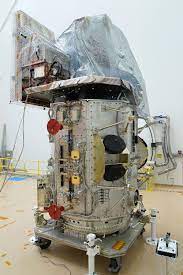
NASA has launched an earth monitoring satellite called Landsat 9 from Vandenberg Space Force Base in California. The satellite is a joint mission of NASA and the US Geological Survey (USGS).
- This satellite is referred to as NASA’s’ new eye in the sky’ that will help study climate change.
- Landsat-9 is the continuation of a series of Earth-observing spacecraft stretching back almost 50 years.
- The first Landsat satellite was launched in 1972 and since then, Landsat satellites have collected images of earth and helped understand how land usage has changed over the decades.
- In 2008, it was decided that all Landsat images will be free and publicly available and the policy has helped scores of researchers, farmers, policy analysts, glaciologists, and seismologists.
- Landsat images have been used to study the health of forests, coral reefs, monitor water quality and melting glaciers.
About Landsat 9:
- The Landsat 9 joins Landsat 8 that was launched in 2013 and the satellites together will collect images of Earth’s surface.
- It takes 8 days to capture the whole Earth.
- Landsat 9 carries instruments similar to the other Landsat satellites, but it is the most technologically advanced satellite of its generation.
- The instruments aboard Landsat 9 are the Operational Land Imager 2 (OLI-2) and the Thermal Infrared Sensor 2 (TIRS-2).
- OLI-2: It captures sunlight reflected off Earth’s surface and studies the visible, near-infrared, and short wave infrared portions of the spectrum.
- TIRS-2: It has a four-element refractive telescope and photosensitive detectors that capture thermal radiation and help study the Earth’s surface temperature.
- Along with the European Union’s Sentinel-2 satellites, the Landsat Satellite will provide better estimation of the extent of climate change.
Build Back Better World (B3W) Initiative:
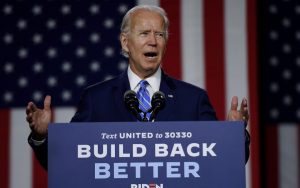
US officials are set to visit Latin America to look for possible projects for the Build Back Better World (B3W) Initiative. B3W is an international infrastructure investment initiative announced by the Group of Seven (G-7) richest democracies in June 2021.
- The B3W initiative is being seen as the US’ initiative to counter China’s Belt and Road Initiative (BRI).
B3W & its Guiding Principles:
- The Build Back Better Plan is a Covid-19 relief, future economic, and infrastructure package proposed by G-7 countries for developing and lower-income countries.
- Components of B3W: Through B3W, the G7 and other like-minded partners will coordinate in mobilizing private-sector capital in four areas of focus:
- Climate,
- Health and health security,
- Digital technology,
- Gender equity and equality.
- Values-Driven Development: Infrastructure development carried out in a transparent and sustainable manner – financially, environmentally, and socially – will lead to a better outcome for recipient countries and communities.
- Good Governance and Strong Standards: B3W to infuse investment by complying with the standards promoted by the Blue Dot Network, relating to the environment and climate, labor and social safeguards, transparency, financing, construction, anti-corruption, and other areas.
- Climate-Friendly: The investments will be made in a manner consistent with achieving the goals of the Paris Climate Agreement.
- Strong Strategic Partnerships: B3W will envisage countering the aggressive model of development and establish a more inclusive model of global development.
- The BRI project was launched in 2013, it broadly aims to facilitate cross-border transportation of goods, access to energy, creating demand for existing excess capacity in Chinese industries.
- China had an overall exposure of investment of around $750 billion between 2013 to mid-2020.
US Congressional Report On Terrorism:
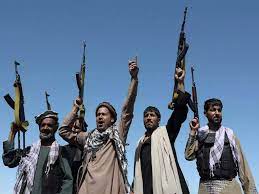
The US Congressional report on terrorism stated that Pakistan is home to at least 12 groups designated as Foreign Terrorist Organisation (FTO).
- The report named Terrorist and Other Militant Groups in Pakistan, released by the bipartisan research wing of US Congress in the Quad summit 2021.
- Earlier, in February 2021, the Financial Action Task Force (FATF) had decided to retain Pakistan on the greylist.
- Pakistan has continued to serve as a safe haven for certain regionally focused terrorist groups, and has allowed groups targeting Afghanistan as well as groups targeting India to operate from its territory.
- Pakistan’s neighbours, including Afghanistan and India, and the US have long accused Islamabad of providing safe haven and support to militants.
- The groups operating in Pakistan can be broadly categorised into five types:
- Globally-oriented
- Afghanistan oriented
- India- and Kashmir-oriented
- Domestically oriented
- Sectarian (anti-Shia).
Impact Of Climate Change On Children:
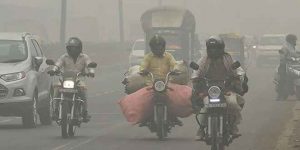
In a study published in the journal Science, researchers have found that children born today will be hit much harder by extreme climate events than today’s adults.
- During his or her lifetime, a child born in 2021 is likely to experience on average twice as many wildfires, two to three times more droughts, almost three times more river floods and crop failures and about seven times more heat waves compared to a person who is, say, 60 years old today.
- Under a scenario of current “insufficient” climate policies, dangerous extreme heatwave events, which affect about 15% of the global land area today, could treble to 46% by the end of this century.
- However, if countries are able to follow through with their climate policies as decided under the Paris Climate Agreement, this effect could be limited to 22%, which is just seven percentage points more than the global land area that is affected today.
- In terms of experiencing droughts, heatwaves, river floods and crop failures, people under the age of 40 today will live what the researchers call “an unprecedented life”.
Inter-sectoral Impact Model Intercomparison Project (ISIMIP)
- The study is based on data from the Inter-sectoral Impact Model Intercomparison Project (ISIMIP).
- This is a community-driven climate-impacts modelling initiative that assess the differential impacts of climate change.
- The ISIMIP data were used alongside country-scale, life-expectancy data, population data and temperature trajectories from the Intergovernmental Panel on Climate Change (IPCC).
National Action Plan For Dog Mediated Rabies Elimination:

On the occasion of World Rabies Day, central Government has unveiled the ‘National Action Plan for dog Mediated Rabies Elimination’(NAPRE) by 2030.
- The National Centre for Disease Control (NCDC) has drafted the action plan in consultation with the Ministry of Fisheries, Animal Husbandry and Dairying.
- Rabies is a fatal but preventable viral disease. It can spread to people and pets if they are bitten or scratched by a rabid animal.
- Rabies is mostly found in wild animals like bats, raccoons, skunks, and foxes, dogs and most rabies deaths in people around the world are caused by dog bites.
- The rabies virus infects the central nervous system.
- If a person does not receive the appropriate medical care after a potential rabies exposure, the virus can cause disease in the brain, ultimately resulting in death.
- Rabies can be prevented by vaccinating pets, staying away from wildlife, and seeking medical care after potential exposures before symptoms start.
- Rabies virus is transmitted through direct contact (such as through broken skin or mucous membranes in the eyes, nose, or mouth) with saliva or brain/nervous system tissue from an infected animal.
- Transmission:
- Rabies affects only mammals.
- Rabies in India:
- India has around 20,000 rabies deaths a year. Worldwide, over 59,000 people die every year from rabies, around 40% of them aged under 15.
- Rabies is responsible for extensive morbidity and mortality in India.
- The disease is endemic throughout the country.
- With the exception of Andaman & Nicobar and Lakshadweep Islands, human cases of rabies are reported from all over the country. The cases occur throughout the year.
- About 96% of the mortality and morbidity is associated with dog bites.
Anti-Defection Law:

Jignesh Mewani, an independent MLA from Gujarat, has said he has joined the Congress “in spirit” as he could not formally do so, having been elected as an independent.
- The Tenth Schedule of the Constitution, popularly known as the anti-defection law, specifies the circumstances under which changing of political parties by legislators invites action under the law. It includes situations in which an independent MLA, too, joins a party after the election.
- The law covers three scenarios with respect to shifting of political parties by an MP or an MLA.
- The first is when a member elected on the ticket of a political party “voluntarily gives up” membership of such a party or votes in the House against the wishes of the party.
- The second is when a legislator who has won his or her seat as an independent candidate joins a political party after the election.
- In both these instances, the legislator loses the seat in the legislature on changing (or joining) a party.
- The third scenario relates to nominated MPs. In their case, the law gives them six months to join a political party, after being nominated. If they join a party after such time, they stand to lose their seat in the House.
- Disqualification: Under the anti-defection law, the power to decide the disqualification of an MP or MLA rests with the presiding officer of the legislature. The law does not specify a time frame in which such a decision has to be made.
Bhagat Singh:

28th September is the birth anniversary of revolutionary freedom fighter Bhagat Singh
- Bhagat Singh was born in 1907 in Lyallpur district (now in Pakistan), and grew up in a Sikh family deeply involved in political activities.
- In 1923, Bhagat Singh joined the National College, Lahore which was founded and managed by Lala Lajpat Rai and Bhai Parmanand.
- In 1924 in Kanpur, he became a member of the Hindustan Republican Association (HRA), started by Sachindranath Sanyal a year earlier.
- In 1928, HRA was renamed from Hindustan Republican Association to Hindustan Socialist Republican Association (HSRA).
- In 1925-26 Bhagat Singh and his colleagues started a militant youth organization called the Naujawan Bharat Sabha.
- In 1927, he was first arrested on charges of association with the Kakori Case accused for an article written under the pseudonym Vidrohi (Rebel).
- In 1928, Lala Lajpat Rai had led a procession to protest against the arrival of the Simon Commission. The police resorted to a brutal lathi charge, in which Lala Lajpat Rai was severely injured and later succumbed to his injuries.
- To take revenge for the death of Lala Lajpat Rai, Bhagat Singh and his associates plotted the assassination of James A. Scott, the Superintendent of Police.
- However, the revolutionaries mistakenly killed J.P. Saunders. The incident is famously known as Lahore Conspiracy case (1929).
- Bhagat Singh and B.K. Dutt threw a bomb on 8 April, 1929 in the Central Legislative Assembly, in protest against the passing of two repressive bills, the Public Safety Bill and the Trade Dispute Bill.
- The aim was not to kill but to make the deaf hear, and to remind the foreign government of its callous exploitation.
- Both Bhagat Singh and B.K. Dutt surrendered thereafter and faced trial so they could further promote their cause. They were awarded life imprisonment for this incident.
- However, Bhagat Singh was re-arrested for the murder of J.P. Saunders and bomb manufacturing in the Lahore Conspiracy case.
- He was found guilty in this case and was hanged on 23rd March, 1931 in Lahore along with Sukhdev and Rajguru.
- Every year, March 23 is observed as Martyrs’ Day as a tribute to freedom fighters Bhagat Singh, Sukhdev, and Rajguru.
Zojila Tunnel:
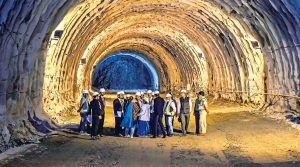
Government is pushing to complete the massive Zojila tunnel, its showpiece infra project in Kashmir and Ladakh, before Republic Day, 2024. Road Transport Minister Nitin Gadkari inspected the west portal of the tunnel in Baltal.
- At 14.15 km, the Zojila tunnel will be India’s longest road tunnel, and Asia’s longest bi-directional tunnel.
- A connecting tunnel from Z-Morh on NH1 to the Zojila tunnel will be built in the Zojila Ghats between Sonmarg and Kargil.
- When complete, the Zojila tunnel will allow travel between Srinagar and Ladakh throughout the year.
- The distance from Baltal to Minamarg will come down to 13 km from the present 40 km, travel time is expected to be cut by an hour and a half, and the journey is expected be less strenuous.
- The project is expected to lead to integrated development of both Jammu and Kashmir and Ladakh.
- The work on the entire 33-km span is divided into two divisions.
- The first part involves development and expansion of the 18.475-km highway between Z-Morh to Zojila. A 3-km stretch will be expanded; the rest will be newly developed. The highway will have 2 twin-tube tunnels, 5 bridges, and 2 snow galleries.
- The second part is building the 14.15-km Zojila tunnel itself — 9.5 m wide, 7.57 m high, 2 lanes, in shape of a horseshoe.
- In addition, a 2,350-m concrete ‘cut and cover’ tunnel will be built, along with 3 ventilation caverns/shafts. Works also include construction of portals, control buildings, ventilation buildings and muck disposables along the route.
Ordnance Factory Board (OFB):

The Defence Ministry has issued an order for the dissolution of the Ordnance Factory Board (OFB) with effect from October 1 upon which its assets, employees and management would be transferred to seven newly constituted defence public sector undertakings (DPSUs).
- This would mean the end of the OFB, the establishment of which was accepted by the British in 1775.
- On June 16, the Union Cabinet had approved a long-awaited reform plan to corporatise the OFB, which has 41 factories, into seven fully government-owned corporate entities on the lines of DPSUs.
- With effect from October 1, the management, control, operations and maintenance of these 41 production units and identified non-production units would be transferred to seven government companies: Munitions India Ltd., Armoured Vehicles Nigam Ltd., Advanced Weapons and Equipment India Ltd., Troop Comforts Ltd., Yantra India Ltd., India Optel Ltd., and Gliders India Ltd.
- All the employees of OFB (Group A, B and C) belonging to the production units and also the identified non-production units shall be transferred en masse to the new DPSUs on terms of foreign service without any deputation allowance initially for a period of two years.




